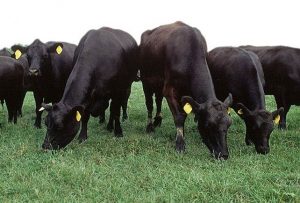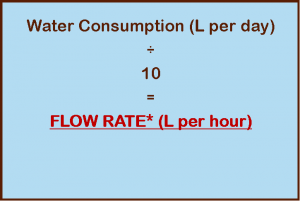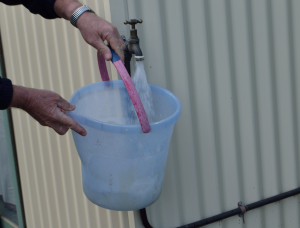Flow Rate
Definition and how to find it
Flow rate literally means the speed of the water flowing through the line. It is a volumetric measurement, usually expressed in litres per hour. It is an absolutely crucial number because each type of dosing machine can only dose a finite amount of an additive per hour.
There are 3 really easy methods for working out your flow rate:
- In livestock dosing applications, you can get a rough flow rate from the water consumption of the group (example to follow).
- If your water will be flowing at a constant rate throughout dosing, you can measure this at any outlet in the line (example to follow).
- If the water line already has some kind of water meter in place, you can monitor this for a period of time (1 hour for instance) and calculate the flow rate this way.
Method 1

Remember Hamish and his friends?
They drink 3500 litres of water per day (as a group). If they drank this evenly across 24 hours, this would mean that about 146 litres have to flow out to the troughs every hour (3500 ÷24). This is a flow rate of 146 litres per hour.
But Hamish and his mates don’t drink evenly throughout the whole 24 hours. In fact, they drink almost all of their daily need in 10 hours or less. If we divide their consumption by 10, we get 350 litres per hour. This is a much more likely average FLOW RATE for the line, when the water is actually running through it.
Formula

Method 2

This can be used with any outlet on the water line, and is best suited for measuring flow rates that will remain constant. You will need:
- Access to an outlet in the line (a tap in this example).
- A container of known volume (a 20 litre bucket in this example).
- A stopwatch or other timekeeping device.

Place your container under the outlet and open the outlet. Time how long it takes for the container to fill. Depending on the amount of time this takes, you can then apply mathematical formulae to convert this number into Litres per hour (Flow rate).
Example
A 20L bucket which has filled in 1 minute. This is a flow rate of 20 litres per minute, or 20 litres x 60 minutes which equals 120 litres per hour. Therefore, if the same bucket took 2 minutes to fill, the flow rate would by 10 litres per minute (20 litres/2 minutes) or 60 litres (10 litres x 60 minutes) per hour.
